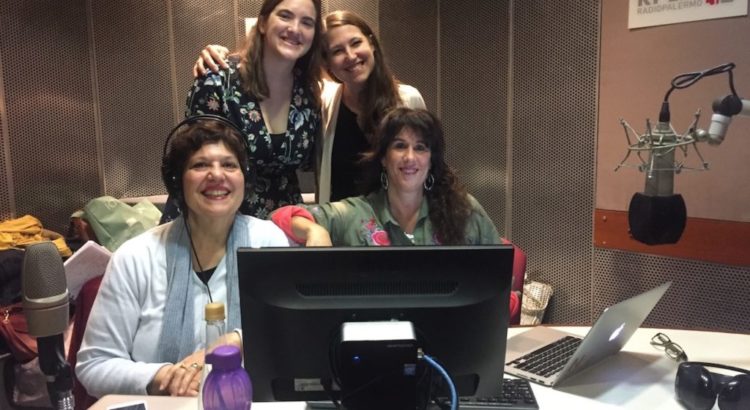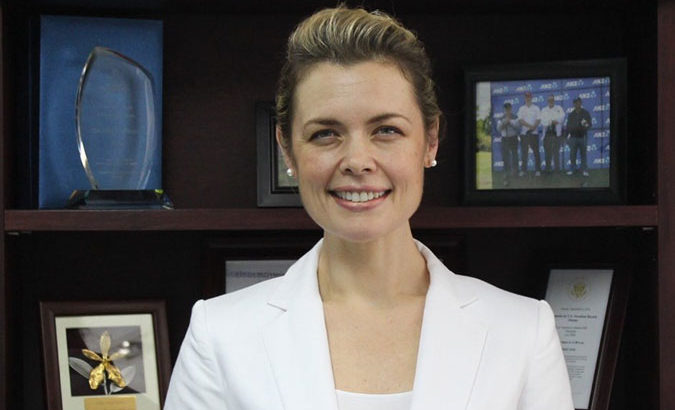05 Noviembre 2017/Fuente: noticiaspositivas/Autor: Andrea Mendez Brandam
Nació este año como una organización cívica y social, de financiación privada, que pone a disposición perfiles de mujeres oradoras especialistas de cualquier área
Proyecto Mira nació este año como una organización cívica y social, de financiación privada, que pone a disposición perfiles de mujeres oradoras especialistas de cualquier área para los paneles, conferencias, entrevistas, artículos o notas que sus clientes necesiten armar, en busca de que cada instancia de comunicación sea más diversa. Además, crean y trabajan para fortalecer la red de mujeres comunicadoras y líderes en sus distintas áreas, dando el espacio para que se gesten más proyectos, recursos y sinergias.
Marina Solanas y Sofía del Carril son sus directoras. Solanas es ingeniera industrial, con una maestría en sistemas de energías renovables y liderazgo en ingeniería, enfocada en procesos más sostenibles e inclusivos (@marina_solanas) y Del Carril es abogada, con una maestría en relaciones internacionales, trabaja en temas de transparencia y reformas políticas (@delcarrils).
AMB: -¿De qué se trata el Proyecto Mira?
Marina Solanas: -Es una iniciativa que propone aumentar la voz y la visibilidad de las mujeres en la esfera pública en general, y en los medios, poniendo a disposición información y perfiles de mujeres especialistas en distintas áreas, dando herramientas de desarrollo profesional y personal y creando redes.
AMB: -¿Por qué sintieron la necesidad de trabajar en este proyecto?
Sofía del Carril: -Es algo que nos surgió a las dos cuando volvimos de hacer nuestros estudios de posgrado en EE. UU. Cuando llegamos acá nos dimos cuenta que, si bien EE. UU. no es la panacea en estos temas, había una diferencia con la Argentina en el sentido de que acá había muchísimas mujeres y talentos que estaban siendo desperdiciados, que no estaban ocupando los lugares que se merecían. Tampoco había una gran conciencia sobre estos temas, y eso nos movió a empezar a conceptualizar esta iniciativa.
MS: -Por mi lado también creo firmemente, y lo dice también Naciones Unidas, que no puede haber un desarrollo sostenible sin una igualdad de género. Al mismo tiempo, nuestro país no puede ser sostenible ni puede tener todo el valor que tendría si nuestras mujeres estuviesen insertas en nuestra economía. Nuestra economía podría ser mucho más exitosa, y junto con la inclusión podríamos tener un país mucho más sostenible y próspero.
AMB: -La mirada de la mujer es distinta.
MS: -Totalmente. Tenemos características distintas, y sin diversidad e inclusión no se puede llegar demasiado lejos.
SC: -Dos de los grandes pilares del proyecto son, al margen de la base de datos que estamos armando, por un lado la parte de talleres y de herramientas, y el de redes. La idea es armar distintas redes para que nos vayamos conociendo y ayudando entre todas. Yo, por ejemplo, vengo del mundo del Derecho y las Ciencias Sociales, y quizá no tenía mucho conocimiento de la situación de las mujeres en otras áreas. La idea de Proyecto Mira es que puedas tener mujeres especialistas en diferentes ámbitos y que puedan referirse unas y otras.
MS: -La idea de la base de datos es que crezca en forma orgánica mediante un proceso de nominación, y que los que acceden a esta base de datos sean los medios, la prensa, organizadores de eventos, paneles y conferencias, u organizaciones que necesiten diversidad en sus equipos de trabajo.
GM: -¿Cómo están recolectando los datos?
SC: -Por un lado recibimos postulaciones espontáneas, nos pueden escribir a info@proyectomira.com.ar, y por otro lado lo que vamos a hacer para que sea una red orgánica es que sea un proceso como una “bola de nieve”. Por ejemplo: yo nomino a alguien, y le pido que nomine a otras tantas personas, y así sucesivamente.
MS: -Esta red se basa en un sello de confianza. Es decir, no somos nosotras las únicas que pueden nominar, sino que la idea es que luego esto se vaya desarrollando de forma orgánica y tome vida sin nuestra intervención. Nosotras no queremos que esta base de datos dependa de nosotras. Estamos acá para hacer despegar el proyecto, y que luego vaya nutriéndose y creciendo de forma orgánica y sin el impulso inicial que le estamos dando.
AMB: -¿Qué les pasa cuando van contando el proyecto?
MS: -Las respuestas que tenemos son geniales. A todos los que les contamos la idea les encanta, recibimos mucha colaboración de distintas personas que quieren formar parte de la base de datos pero también quieren darle impulso. También nos juntamos con muchísimas personas del ámbito emprendedor y de gente enfocada en temas de género.
AMB: -¿Cómo pueden contactarse con ustedes quienes quieran formar parte del Proyecto Mira?
MS: -Queremos invitar a que todas aquellas personas que quieran pertenecer a la base de datos nos escriban a info@proyectomira.com.ar. Pronto estaremos publicando la base de datos con todas estas mujeres especialistas en distintas áreas para que puedan agregar esta diversidad.
Fuente de la entrevista: http://noticiaspositivas.org/proyecto-mira/
Fuente de la imagen: http://noticiaspositivas.org/wp-content/uploads/2017/10/Proyecto-Mira-1024×768.jp








 Users Today : 62
Users Today : 62 Total Users : 35459968
Total Users : 35459968 Views Today : 77
Views Today : 77 Total views : 3418542
Total views : 3418542